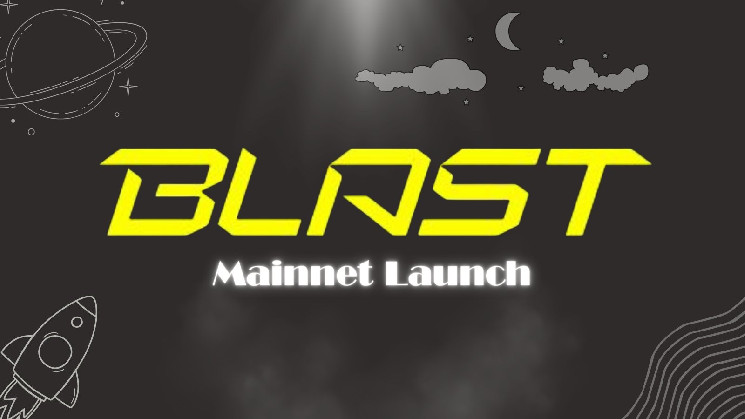-
Blast Network declared its intention to airdrop tokens following its mainnet launch in an ‘X’ post.
-
The primary release unveiled $2.3 billion of staked crypto, previously captive within the network.
-
Membership in BLAST! Offers unlimited job posting privileges without job board fees, save for a singular annual membership payment.
The landscape of decentralized finance is continually expanding, and a prime example of this growth is the recent announcement by Blast regarding its Layer-2 project. The launch of Blast’s mainnet, set against the backdrop of a burgeoning crypto economy, marks a significant moment for staked crypto assets.
On March 1, Blast declared its intention to airdrop tokens following its mainnet launch in an ‘X’ post. This generous allocation will be split, with one portion for the user community and the remaining earmarked for decentralized applications (DApps), including Blast Gold. The crypto community is eagerly anticipating the disclosure of the airdrop’s total value.
Blast galvanized the crypto landscape when it emerged on November 22, 2023, as an EVM-compatible scaling solution employing Optimistic Rollups. Designed to enhance transaction throughput without sacrificing security, Blast offers a passive annual yield ranging from 4–5%. When Tieshun Rokerra of Blur launched it, the platform swiftly captivated a staggering $130 million in user assets in just a day, underscoring the intense interest in crypto.
Blast Network launches Ethereum L2 mainnet, unlocking $2.3B in staked crypto.
The mainnet’s activation unlocked a vast $2.3 billion asset, free to generate staking and airdrop rewards. The pre-launch phase saw 181,888 community members transfer $2.3 billion to the Blast ecosystem. This collective effort promises an $85 million return in yield and Blast Points per year, significantly boosting the Blast platform’s value proposition.

In preparation for the big event, well over 3,000 teams focused their efforts on Blast. These developers have engineered unique decentralized applications that harness Blast’s proprietary gas mining and distribution mechanisms, further enriching the ecosystem with innovative functionalities.
Before the rollout, Blast forged a strategic alliance with Sushi, the acclaimed decentralized exchange. While specifics remain shrouded in secrecy, the community speculates that Sushi might incorporate Blast’s technological offerings into its suite of services, a development with potentially widespread implications.
Investment titans Paradigm and Standard Crypto provide a robust $20 million financial backstop to buttress Blast’s official rollout. Sadly, not all was calm in the blast realm. The RiskOnBlast project, an element of Blast’s Layer 2 endeavours, suffered a sharp setback from a significant “rug pull,” with approximately 500 Ethereum (ETH) vanishing amidst the turmoil. The RiskOnBlast social media landscape raised red flags due to notable gaps.
Also, Read Crypto Crackdown in Nigeria: Balancing Economic Stability and Innovation.
The primary release unveiled $2.3 billion of staked crypto, previously captive within the network. This momentous occasion allowed roughly 180,000 thrilled Blast users to collectively withdraw assets amounting to $400 million for the first time. Blast’s grand deployment of its optimistic rollup blockchain scaler presents up to a 5% annual yield on Ether and stablecoins, drawing from the invested Ethereum and T-Bills overseen by MakerDAO.
Moreover, Blast’s deployment has been with its share of drama. Dan Robinson, head researcher at seed investor Paradigm, voiced concerns in an X post last November. He highlighted uncomfortable reservations about introducing the bridge before L2 operations, citing a worrisome precedent for similar ventures. Moreover, Paradigm distanced itself from certain promotional activities, suggesting they undermined the seriousness of Blast’s mission.
The Blast network grappled with its first alleged exit scam. A gambling protocol dubbed “Risk on Blast” allegedly absconded with 420 ETH, roughly equivalent to $1.25 million at the time, derived from its so-called RISK presale token venture.
The BLAST! Network contrasts starkly with these controversies, offering a suite of free job boards and career sites. It allows unlimited job postings without incurring the typical costs of job board publications. eQuest, utilizing its pinpoint tracking technology, curates non-paying career sites by vetting substantial candidate responses.
Members are offered unfettered posting access by incorporating only the most relevant boards into the network. Importantly, these boards are periodically reviewed to confirm a steady flow of candidate interactions, with the system cycling out non-performers in the network.
Membership in BLAST! Offers unlimited job posting privileges without job board fees, save for a singular annual membership payment. The network spans numerous career sectors, including professional, managerial, financial, pharma, biotech, academia, energy, sales, engineering, IT development, and administrative. Representing an affordable alternative to costly job boards, BLAST! is a welcome augmentation to existing recruitment strategies rather than an isolated sourcing solution.
This enriched article encapsulates the evolving tale of Blast’s mainnet unveiling, its layered blockchain technology, and the broader impact on the digital currency ecosystem. Blast’s journey symbolizes the dynamic, sometimes tumultuous world of cryptocurrency innovation and deployment, from the excitement of airdrop prospectors to the strategic partnerships forming in the shadows.
Also, Read Adieu to Leveraged Tokens: Binance Announces Strategic Shift Amidst Crypto Market Changes.
